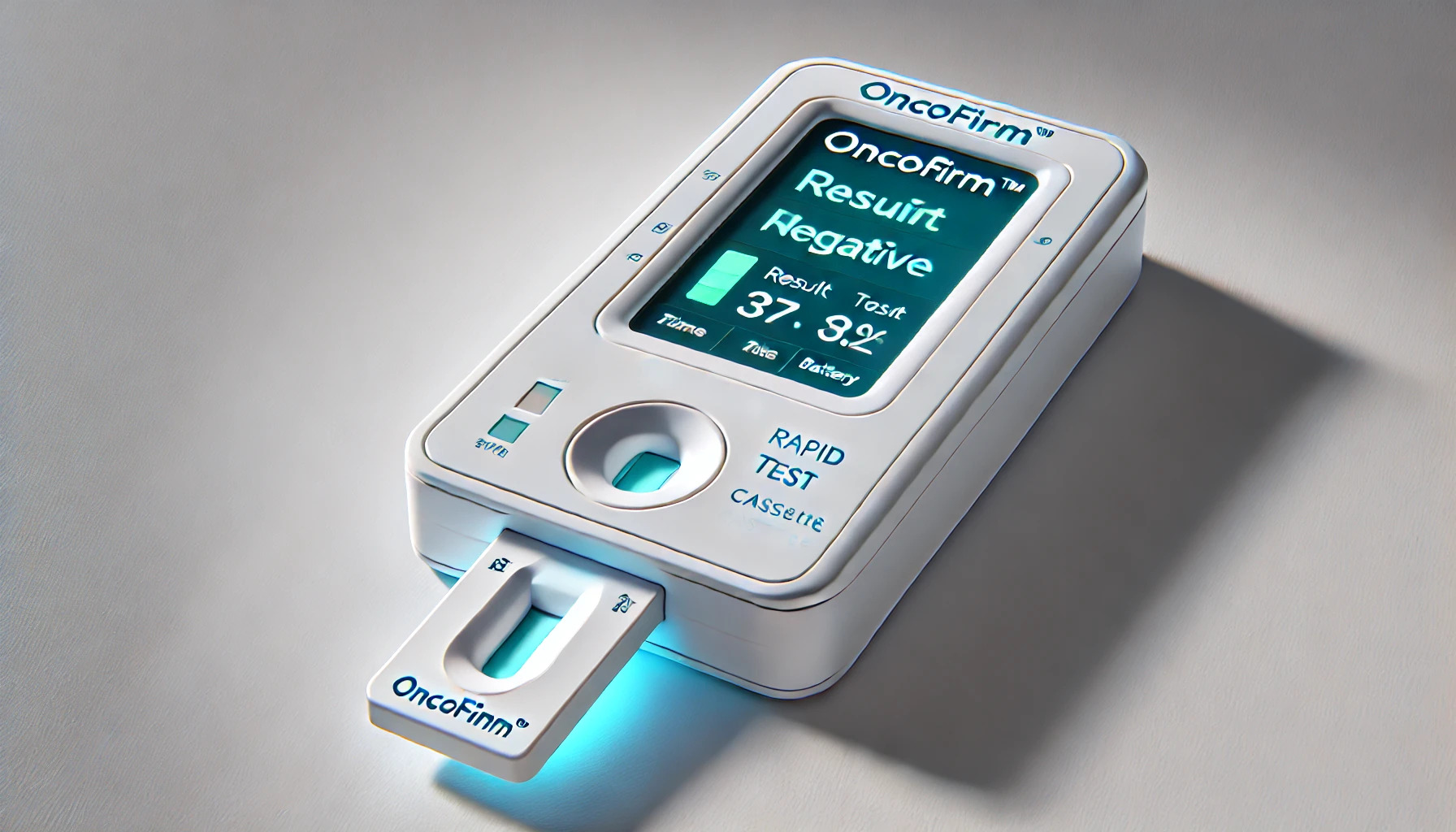OncoFirm™ Electronic Reader
OncoFirm™ Electronic Reader cassette reader* (detailed information coming soon)…
Cutting-Edge Digital Cancer Diagnostics Solutions
Lateral Flow Electronic Reader (LFER) technology is an advanced diagnostic tool used to enhance and quantify results from lateral flow assays (LFAs), which are common in rapid tests like pregnancy or COVID-19 tests. While traditional LFAs are visual (relying on colored lines visible to the naked eye), electronic readers provide quantitative, objective, and often more sensitive results.
🔬 What is a Lateral Flow Electronic Reader?
A lateral flow electronic reader is a portable or benchtop device that interprets test strip results using optical, electrochemical, or fluorescence detection. These readers are designed to improve the accuracy, reproducibility, and traceability of LFA results.
⚙️ How It Works
- Sample runs through a test strip, just like in traditional LFAs.
- Signal generation: Instead of just colored lines, signal labels (like gold nanoparticles, fluorescent dyes, or electrochemical markers) produce a measurable signal.
- Electronic detection: The reader detects this signal using one of the following:
- Optical sensors (e.g., photodiodes, CCD cameras)
- Fluorescence detectors
- Electrochemical sensors
- Data output: The signal is converted into a quantitative value displayed on a screen or sent to a connected device (e.g., smartphone or cloud system).
📦 Key Technologies Used in LFERs
- Gold nanoparticle-based optical detection (most common)
- Quantum dot fluorescence for high sensitivity
- Electrochemical detection using screen-printed electrodes
- Magnetic nanoparticles with magneto-resistive sensors
- Smartphone integration for field diagnostics and data logging
✅ Advantages
- Quantitative results vs. qualitative visual lines
- Higher sensitivity and lower detection limits
- Reduced subjectivity and human error
- Data connectivity: often Bluetooth or Wi-Fi enabled
- Time-stamping and record-keeping for clinical settings
🧪 Applications
- Medical diagnostics (e.g., infectious diseases, cancer biomarkers, hormones)
- Veterinary and agricultural testing
- Food safety and environmental monitoring
- Biomarker quantification (e.g., CRP, PSA, CA125, CA72-4)

